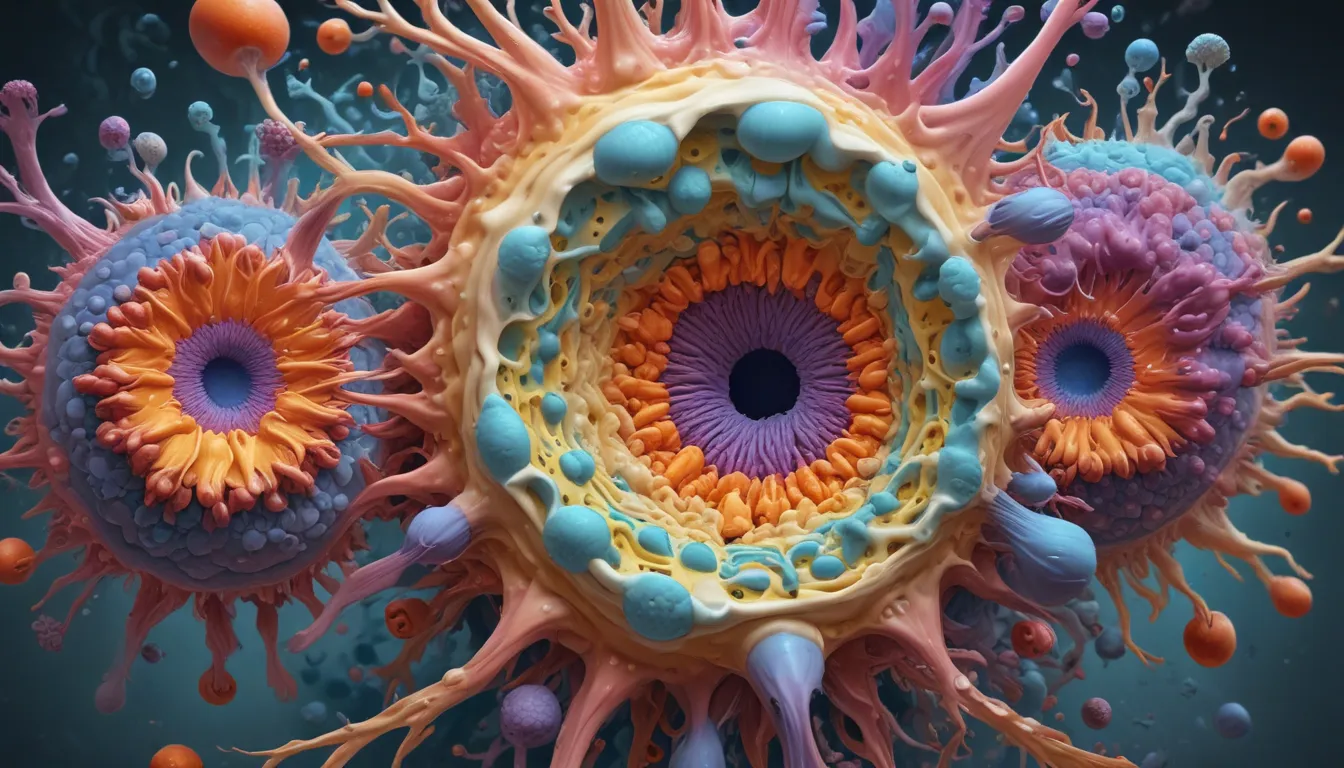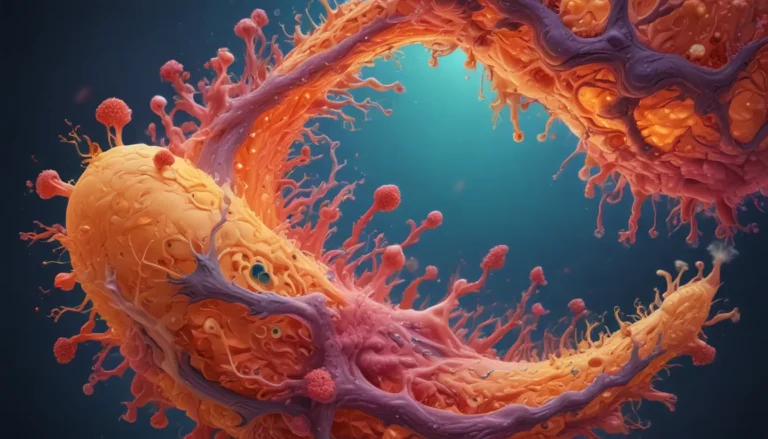A Note About Images: The images used in our articles are for illustration purposes only and may not exactly match the content. They are meant to engage readers, but the text should be relied upon for accurate information.
Are you intrigued by the mysterious world of cellular biology? Do you find yourself captivated by the extraordinary capabilities of stem cells? If so, join us on an enlightening journey as we explore the fascinating realm of totipotent cells. These remarkable cells possess the unique ability to become any cell in the body, offering new avenues for treating diseases and injuries through regenerative medicine. Let’s dive deeper into the complex and intriguing nature of totipotent cells, unraveling their potential and the ethical considerations that surround them.
Delving into the World of Totipotent Cells
Totipotent cells stand out as truly exceptional entities in the realm of cellular biology. These cells possess the remarkable capacity to differentiate into any cell type found in the tissues and organs of the human body. Imagine the potential inherent in a cell that can give rise to a vast array of specialized cells, from neurons to muscle cells and everything in between. Totipotent cells play a crucial role in the early stages of embryonic development, laying the foundation for the formation of complex multicellular organisms.
The Origins of Totipotent Cells
Where do these extraordinary cells come from? Totipotent cells are found in the fertilized egg, known as the zygote, resulting from the union of a sperm and egg during fertilization. This single-cell entity possesses the incredible potential to develop into an entire organism. As the zygote undergoes rapid cell division, it eventually forms a structure known as a blastocyst, housing a specific group of totipotent cells called trophoblast cells. These cells play a crucial role in the formation of the placenta, a vital organ that supports the developing embryo and fetus.
Unleashing the Power of Cellular Reprogramming
Scientists have made groundbreaking advancements in the realm of cellular reprogramming, unlocking new possibilities for manipulating cell fate. Through techniques such as somatic cell nuclear transfer and induced pluripotent stem cell generation, ordinary cells can be transformed into totipotent or pluripotent cells. This transformative process offers unprecedented opportunities for harnessing the regenerative potential of totipotent cells in the field of medicine.
The Promise of Regenerative Medicine
One of the most exciting aspects of totipotent cells lies in their potential to revolutionize regenerative medicine. These cells have the unique ability to differentiate into any cell type, holding the promise of generating functional tissues and organs to treat a wide range of diseases and injuries. Imagine a world where damaged tissues can be replaced with healthy, functioning cells derived from totipotent cells. The possibilities for regenerative medicine are truly endless.
Ethical Considerations and Debates
The use of totipotent cells, particularly those derived from early-stage embryos, raises complex ethical questions and moral dilemmas. The extraction of these cells often involves the destruction of embryos, prompting heated debates about the rights of the embryo and the ethical implications of their use in research and treatment. Balancing the potential benefits of totipotent cells with ethical considerations remains a significant challenge in the field of stem cell research.
Exploring the Role of Totipotent Cells in Cloning
Cloning, a controversial yet scientifically intriguing process, relies on the unique capabilities of totipotent cells. Through somatic cell nuclear transfer, the DNA from a donor cell is transferred into an egg cell with its nucleus removed. The resulting embryo is genetically identical to the donor organism, showcasing the potential of totipotent cells in replicating living organisms.
Unlocking the Genetic Mysteries of Totipotent Cells
Totipotent cells exhibit distinctive gene expression patterns that set them apart from other cell types. These unique genetic signatures enable totipotent cells to maintain their totipotency and drive the development of an entire organism. By unraveling the intricacies of gene expression in totipotent cells, scientists can gain valuable insights into the fundamental processes of embryonic development and tissue differentiation.
Paving the Way for Therapeutic Applications
Ongoing research into the therapeutic potential of totipotent cells holds tremendous promise for the field of regenerative medicine. These cells could be utilized to generate organs for transplantation, model diseases for drug testing, and study early human development to shed light on developmental disorders. The potential applications of totipotent cells in treating a wide range of medical conditions are truly groundbreaking.
Conclusion: Embracing the Wonders of Totipotent Cells
In conclusion, totipotent cells represent a captivating frontier in cellular biology, offering unparalleled opportunities for scientific innovation and medical breakthroughs. Their ability to differentiate into any cell type in the body, combined with their role in embryonic development and tissue repair, makes them a cornerstone of regenerative medicine. As researchers continue to unravel the mysteries of totipotent cells, new horizons of discovery and exploration await in the field of cellular biology.
FAQs: Exploring the Fascinating World of Totipotent Cells
-
What does totipotent mean? Totipotent refers to the ability of a cell to develop into any cell type in the body, including both embryonic and extraembryonic tissues.
-
Where are totipotent cells found? Totipotent cells are found in the early stages of embryonic development, shortly after fertilization of the egg.
-
Are totipotent cells the same as stem cells? Totipotent cells are a type of stem cell, with the highest level of potency capable of giving rise to both embryonic and extraembryonic tissues.
-
What is the significance of totipotent cells in regenerative medicine? Totipotent cells offer the potential to replace damaged tissues with healthy, functioning cells, opening new avenues for treating medical conditions.
-
Can totipotent cells be used for therapeutic purposes? While totipotent cells hold immense therapeutic potential, their use is restricted due to ethical and regulatory constraints surrounding human embryo research.
-
Can totipotent cells be artificially induced? Research has shown that adult cells can be reprogrammed into a totipotent-like state through gene manipulation, paving the way for new possibilities in cellular reprogramming.
-
How do totipotent cells differ from pluripotent cells? Totipotent cells can differentiate into both embryonic and extraembryonic tissues, while pluripotent cells have the ability to develop into any cell type in the body, excluding extraembryonic tissues.
-
What are the current challenges in studying totipotent cells? Studying totipotent cells presents challenges such as limited access to human embryos for research and the complexity of maintaining and manipulating these cells in laboratory settings.
As we delve deeper into the world of totipotent cells, we uncover a wealth of knowledge and a realm of possibilities that hold the key to transformative advances in medicine and biology. Join us on this inspiring journey of discovery, as we unravel the mysteries of cellular biology and embrace the wonders of totipotent cells. Together, we can unlock the secrets of life at its most fundamental level, paving the way for a brighter and more enlightened future.






